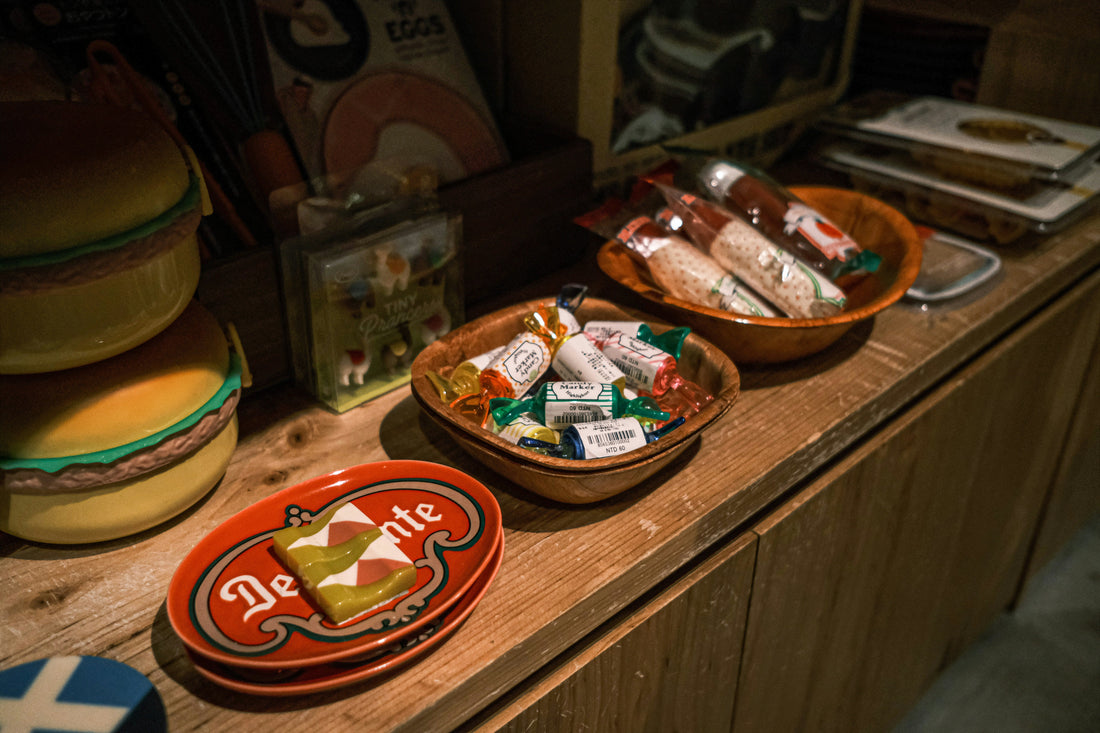Reading material
Asakusa and Japanese sweets - A sweet world where Edo atmosphere lives on -

Asakusa and Japanese sweets
- A sweet world where Edo atmosphere lives on -
Asakusa is the center of Tokyo's downtown culture. From Kaminarimon Gate to Nakamise Street, many tourists come and go, creating a landscape brimming with Japanese charm. Wagashi (traditional Japanese sweets) are an essential part of Asakusa's charm. Asakusa's wagashi (traditional Japanese sweets), beloved by worshippers and tourists alike since ancient times, convey the atmosphere of the Edo period to the present day and are deeply connected to the history of the town itself.
Nakamise Street and the history of Japanese sweets
Nakamise Street, which leads to Sensoji Temple, has flourished as a shopping street welcoming worshippers since the Edo period, and is lined with numerous Japanese confectionery shops. People would buy manju and senbei as souvenirs for their pilgrimages or to enjoy during their travels, and experience the atmosphere of Edo. Even today, Nakamise is lined with long-established Japanese confectionery shops that continue to preserve the traditional flavors.
Asakusa's signature Japanese sweets
The appeal of Asakusa's Japanese sweets is the wide variety available.
・Ningyo-yaki : A baked confectionery shaped like the five-story pagoda and Kaminarimon gate of Sensoji Temple. It is filled with bean paste inside a castella dough cake and is a popular souvenir among tourists.
・Kaminari Okoshi : A traditional sweet named after Kaminarimon Gate. Made from roasted rice and hardened with candy, its fragrant flavor evokes the elegance of Edo.
・Imo Yokan : A famous confectionery created by a long-established shop in Asakusa. Its refined flavor, which brings out the natural sweetness of sweet potatoes, continues to be loved by locals.
・Dorayaki : A classic sweet made of soft dough with bean paste sandwiched between. Each long-established shop has a different flavor, so it's fun to try them all and compare them.
Asakusa's Japanese sweets culture lives on in the modern era
While cherishing tradition, Asakusa's wagashi continues to evolve. New products that are appealing to younger generations and foreign tourists are appearing one after another, such as new styles of dorayaki combined with matcha or coffee, and colorful, artistic nerikiri. Wagashi are not just sweets; they are part of the culture that colors the town of Asakusa, and are integrated into people's lives even today.
How to enjoy Asakusa and Japanese sweets
If you visit Asakusa, be sure to enjoy some Japanese sweets as you stroll around. Strolling around while stuffing your face with a ningyo-yaki (doh-yaki) purchased at Nakamise is a true pleasure unique to Asakusa. The combination of sweet potato yokan and matcha at a long-established teahouse is a special moment where you can experience the elegance of Edo in the modern day.
summary
Asakusa is a town where history and culture live on. Japanese sweets add a sweet touch to the town's charm. Asakusa's Japanese sweets soothe the soul and leave a lasting impression on travellers. In this town where tradition and innovation coexist in harmony, be sure to experience the delicious Japanese culture with every bite.
👉 BONGENCOFFEE | OFFICIAL SITE
https://ginza-bongen.jp/